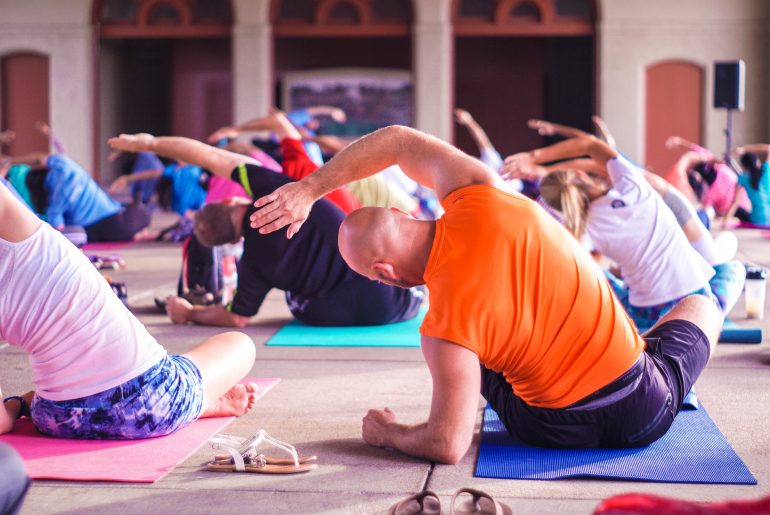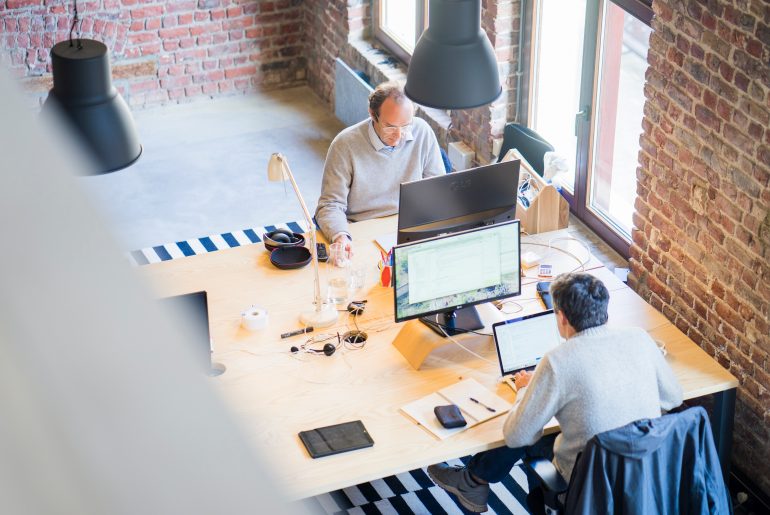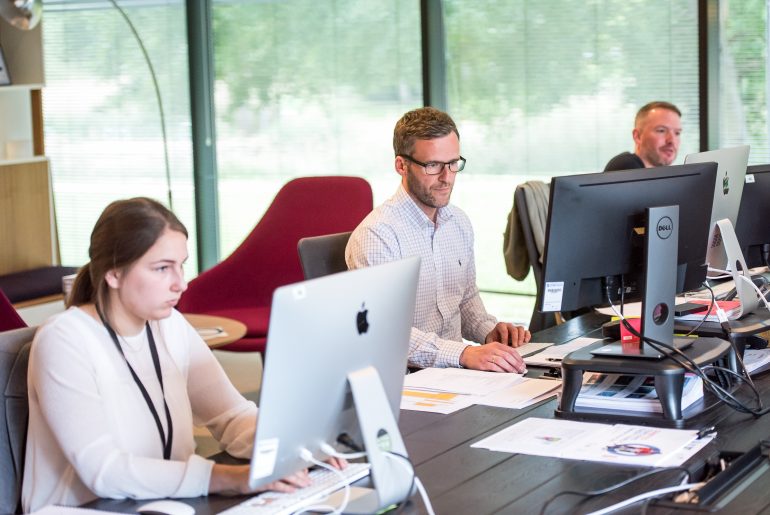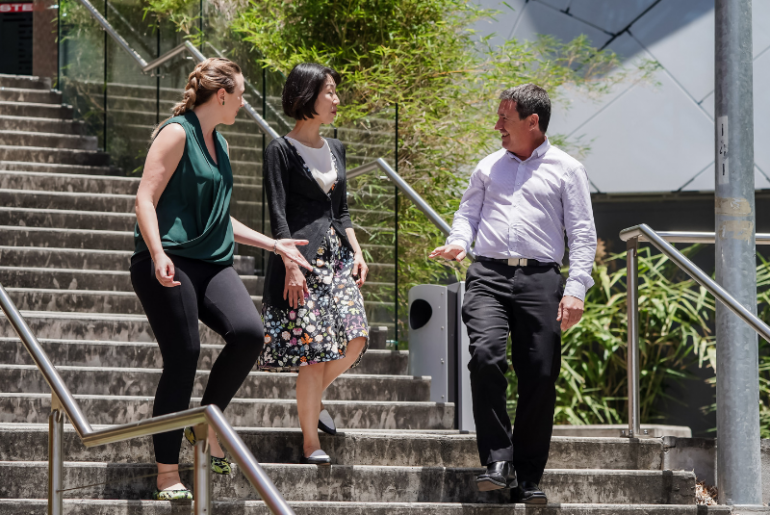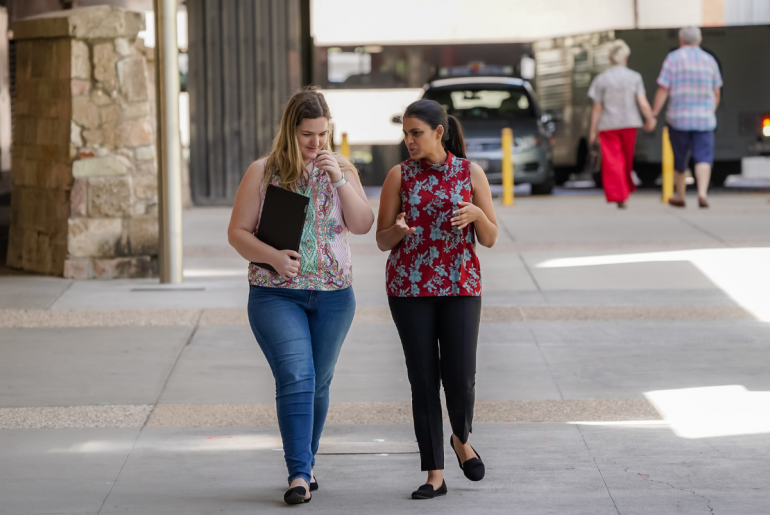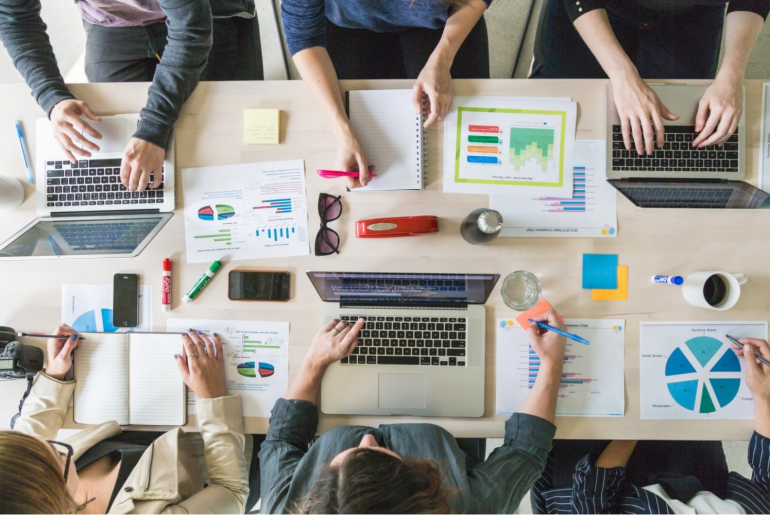This article written by Katie MacAskill was originally published on 31 July 2019 on The Sedentary Behaviour Research Network (SBRN) website. Exercising has been proven over and over again to benefit physical and mental health. In the context of the workplace, countless researchers have seen improvements in employee time management, productivity, focus, personability and more from exercise interventions. As part of their “Power of the Hour” series, a BBC article was published earlier this year on exercise breaks during the workday. The article references a variety of professionals, employers and employees to discuss the values of exercise breaks, noting that some offices even pay their employees to exercise. In recent years, an increasing number of offices are finding and setting up headquarters with a gym or workout studio available in the building. Employees in such offices who make use of these facilities are more productive and tend to leave the office more satisfied with their performance at the end of the day; not to mention the regular benefits that physical activity has on health including immediate cognitive boosts. Setting up big tables and cafes as work spaces in view of treadmills/ellipticals or gym spaces is a new idea companies are…
An Exercise Regimen Everyone Can Squeeze In
The following article was written by Emmanuel Stamatakis and published in The Conversation on the 21st February 2019. Have you recently carried heavy shopping bags up a few flights of stairs? Or run the last 100 metres to the station to catch your train? If you have, you may have unknowingly been doing a style of exercise called high-intensity incidental physical activity. Our paper, published today in the British Journal of Sports Medicine, shows this type of regular, incidental activity that gets you huffing and puffing is likely to produce health benefits, even if you do it in 30-second bursts, spread over the day. In fact, incorporating more high intensity activity into our daily routines – whether that’s by vacuuming the carpet with vigour or walking uphill to buy your lunch – could be the key to helping all of us get some high quality exercise each day. And that includes people who are overweight and unfit. What is high intensity exercise? Until recently, most health authorities prescribed activity lasting for at least ten continuous minutes, although there was no credible scientific evidence behind this. This recommendation was recently refuted by the 2018 US Physical Activity Guidelines Advisory Report. The new…
How Age and Prolonged Sitting Can Effect Spine Stiffness, Postures and Discomfort
Recent research by Gruevski K and Callaghan J, and published in Ergonomics on 19th April 2019, looked at the effect of age and sex on passive spine stiffness, postures and discomfort in response to seated work. They noted that understanding age-specific postures and pain development patterns during sitting exposures are particularly relevant given the ageing working population in industrialised nations. Participants were in their Late 20s to early 30s or early 60’s were asked to sit continuously for 90 min while typing. Their results showed that older adults had higher passive spine stiffness and sat with less flexion during prolonged sitting. Discomfort was higher among older adults and occurred earlier in the simulation compared to younger participants, indicating that interventions, such as walking breaks may need to be implemented earlier during sitting for aged workers. Click here to read the full article
Standing Up To Sedentary Working
The following article was written by Sophie O’Connell and published in Occupational Health and Wellbeing on the 7th June 2019. The modern world and the constant pursuit of technological growth have almost eliminated the need for movement in our daily lives. While commuting we sit in our cars or on the bus; at work we sit at our computers or in meetings; during our leisure time we sit watching TV, playing computer games or socialising with friends. Because of technology advancements we do not even need to leave the comfort of our own homes to socialise, stay in touch with friends and family, to shop, to work or even be entertained on a screen. This means that, on average, Brits spend around 9.5 hours a day spent sitting. Typically, the amount of time spent sedentary each day increases with age. In working-age adults much of this sitting is done at work. Evidence shows that office-based workers spend around 75% of their working day sitting, with a third of sitting time being done for a prolonged period. Many of us are guilty of spending time sitting for extended periods due to work, travel or various social commitments. But with the growing…
Americans Are Sitting at Record Rates. Here’s Why That’s So Dangerous
The following article was written by Alice Park and was originally published by Time on April 23, 2019. Every day, we modern humans stay comfortably seated on our behinds for hours at a time: binge watching shows on Netflix, pecking away on keyboards at work, scrolling through social media feeds. But do people really sit more than they used to? That’s what Yin Cao and an international group of colleagues wanted to find out in their latest study published in JAMA. While studies on sitting behavior in specific groups of people — such as children or working adults with desk jobs — have recorded how sedentary people are, there is little data on how drastically sitting habits have changed over time. “We don’t know how these patterns have or have not changed in the past 15 years,” says Cao, as assistant professor in public health sciences at the Washington University School of Medicine. The researchers used data collected from 2001 to 2016 by the National Health and Nutrition Examination Survey (NHANES), which asked a representative sample of Americans ages five and older how many hours they spent watching TV or videos daily in the past month, and how many hours they spent…
How Much Do Sedentary People Really Need To Move? It’s Less Than You Think
The following article was originally posted by the Conversation on April 23, 2019 and was written by Emmanuel Stamatakis, Joanne Gale, and Melody Ding. People who spend much of their day sitting may need to move around less than we thought to counteract their sedentary lifestyle, new research shows. Our research, published today in the Journal of the American College of Cardiology, found about 20-40 minutes of physical activity a day seems to eliminate most health risks associated with sitting. That’s substantially lower than the one hour a day a previous study has found. We spend almost all our waking day sitting, standing, or moving. The health impact of each one of these can be complex. For example, too much standing can lead to lower back problems and even a higher risk of heart disease. But sitting for too long and not moving enough can harm our health. Then there are people who sit for many hours and also get in reasonable amounts of physical activity. For example, someone who has an office job but walks to and from work for 20 minutes each way and runs two to three times a week easily meets the recommended level of physical activity. While we know moving is better than…
Forget Standing Desks: To Stay Healthy, You’ve Got To Move All Day
The following article, written by Christopher Keyes, was published by The Guardian on February 6th, 2019. If you want to dedicate yourself to a lifetime of good habits, don’t start at the gym. Start at the office. A few years ago, James Levine, a doctor of endocrinology at the Mayo Clinic, sparked a radical change in America’s office furniture. His research had inspired a pile of viral stories cataloging the negative effects of sitting at a desk: leg muscles shut down, blood pressure increases, good cholesterol plummets, your children starve. OK, I made up that last one, but the real takeaway was no less dire. “Excessive sitting is a lethal activity,” Levine, who has studied sedentary behavior for nearly 20 years and is the most widely quoted expert on the topic, told the New York Times in 2011. And the solution – at least the one people heard – was to start standing. Cue the office makeovers. Over the next several years, workers all across America embraced stand-up desks. At Outside’s headquarters in Santa Fe, New Mexico, our building manager furiously reconfigured work spaces. Desks were removed from their shelving brackets, raised a foot and a half, and remounted. Walking the hallways,…
Sitting for More Than 13 Hours a Day May Sabotage the Benefits of Exercise
The following article, written by Gretchen Reynolds, was originally posted by the New York Times on April 10, 2019. Sitting for most of the day could make us resistant to the usual metabolic benefits of exercise, according to a small but worrying new study. The findings, in the Journal of Applied Physiology, suggest that inactivity may alter our bodies in ways that are not just unhealthy on their own but also blunt the healthfulness of exercise. We know, of course, that physical activity is good for us and being sedentary, for the most part, is not. Regular exercise reduces the risk of heart disease, Type 2 diabetes and many other chronic conditions. Even a single workout can improve our metabolisms, studies show, so that we burn fat more efficiently after meals and keep our blood sugar and insulin levels steady. Inactivity, meanwhile, has almost the opposite physiological effects. People who spend most of their waking hours sitting face heightened risks for many chronic diseases. They often also experience metabolic problems that raise the risk of diabetes and heart disease, including insulin resistance, poor blood sugar control and high levels of triglycerides, the fatty acids from food that linger in the blood…
Can sitting less decrease your risk of heart disease?
The following article, written by Gautam Ramesh, Andrea LaCroix, and John Bellettiere, was originally published on February 25, 2019 in The Conversation. You can read the original article here. Too much sitting has long been criticized for contributing to premature mortality, Type 2 diabetes, and a host of other illnesses. In a new study of 5,638 women, we looked at how sedentary behavior was related to future cardiovascular disease (CVD). The results showed that those who were most sedentary had the highest risk for having a future CVD event. We also found that women who most often interrupted their sedentary time to stand up and move had significantly lower risk for CVD than women who sat for long stretches of time without standing up. The results persisted even after accounting for other common factors linked with CVD such as age, overall health, blood pressure and cholesterol. CVD includes heart attacks, strokes, heart failure and other diseases concerning the heart and blood vessels. It is the leading cause of death in the U.S., accounting for 1 in 4 deaths annually. Our findings, along with the research discussed below, provides strong evidence that sitting too much is an important factor to consider for heart…
Discovery Interviews: What are they, why we are doing them, and what have we found?
The BeUpstanding™ team have recently been out and about talking to and interviewing champions, potential champions, teams, and workplaces about their experience of taking part in BeUpstanding. Today we are going to take a look at what discovery interviews are, what they are used for, and why we are doing them. Most importantly we are going to share some of the interesting things that we found. What are discovery interviews? Discovery interviews have one main purpose – and that is for the researcher (or product development team) to understand how the end user is actually using a product. In our case, they are giving us insights into why organisations and champions are taking up BeUpstanding, or why they might consider taking it up, as well as the barriers and facilitators to success. In this round of interviews, our discovery process has involved in-depth interviews with government departments, mining, and fast moving consumer goods (FMCG) companies, as well as on-site observations of work teams, both before and after putting BeUpstanding into practice. Over the past several months we have conducted numerous interviews. We deliberately chose teams with varying levels of engagement with BeUpstanding. We interviewed teams that were actively using the…

